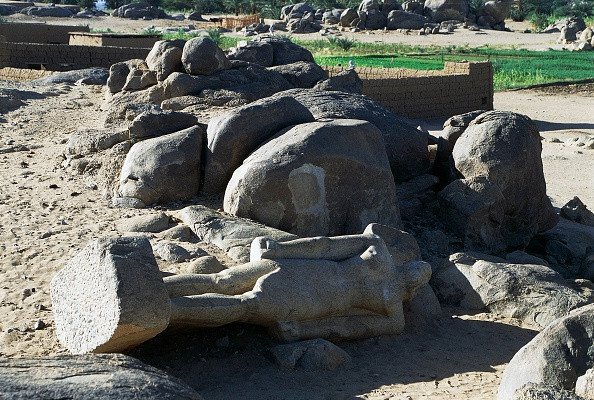Ancient burial sites reveal Egyptian and Nubian cultures merged after fall of New Kingdom Empire

Nubian burial sites in the Nile River Valley bear traces to the idea that Egyptians and Nubians may have interacted, married and eventually formed an integrated community in ancient Sudan, researchers say. They excavated different tombs on the archaeological grounds of Tombos in northern Sudan to better understand the relationship between both populations.
Between the 16th century BC and the 11th century BC, the Egyptians constructed what is known today as the 'New Kingdom'. At the height of its power, the civilisation occupied the north of Sudan to gain access to trade routes on the River Nile and extend its influence.
It was not until 1070 BC that a new era began for the Egyptians – known as the third period – which saw them gradually lose power, to be defeated by the Nubians who subsequently ruled Egypt as the 25<sup>th dynasty.
The researchers' findings, published in the journal American Anthropologist, suggest that instead of completely assimilating into Egyptian culture, Nubians integrated with the occupiers.
"It's been presumed that Nubians absorbed Egyptian cultural features because they had to, but we found cultural entanglement. There was a new identity that combined aspects of their Nubian and Egyptian heritages. And based on biological and isotopic features, we believe they were interacting, intermarrying and eventually becoming a community of Egyptians and Nubians," says lead author Michelle Buzon.
Mixed culture in graves
To come up with these conclusions, Buzon and her team went to Tombos and examined tombs known as Tumulus graves. Buried there was a community descending from Egyptian immigrants and local Nubians.
The researcher looked at mounded, round graves with stones and a shaft underneath, a physical structure which reflects Nubian culture. However, the content of the graves point to some Egyptian cultural features.
"Egyptians are buried in an extended position; on their back with their arms and legs extended. Nubians are generally on their side with their arms and legs flexed. We found some that combine a mixture of traditions. For instance, bodies were placed on a wooden bed, a Nubian tradition, and then placed in an Egyptian pose in an Egyptian coffin", Buzon says.
Skeletal markers also supported the notion that both cultures merged somewhat at the time of the New Kingdom and stayed merged after its downfall.
Questioning Egyptian legacy
Alongside the burial practices observed, the data collected in the tombs on skeletal health suggest the Nubian civilisation continued to function well following the end of the New Kingdom. Individuals remained healthy and prosperous.
"We now have a sense of what happened when the New Kingdom Empire fell apart, and while there had been assumptions that Nubia didn't function very well without the Egyptian administration, the evidence from our site says otherwise," says Buzon.
"We found that Tombos continued to be a prosperous community. We have the continuation of an Egyptian Nubian community that is successful even when Egypt is playing no political role there anymore."
© Copyright IBTimes 2025. All rights reserved.






















